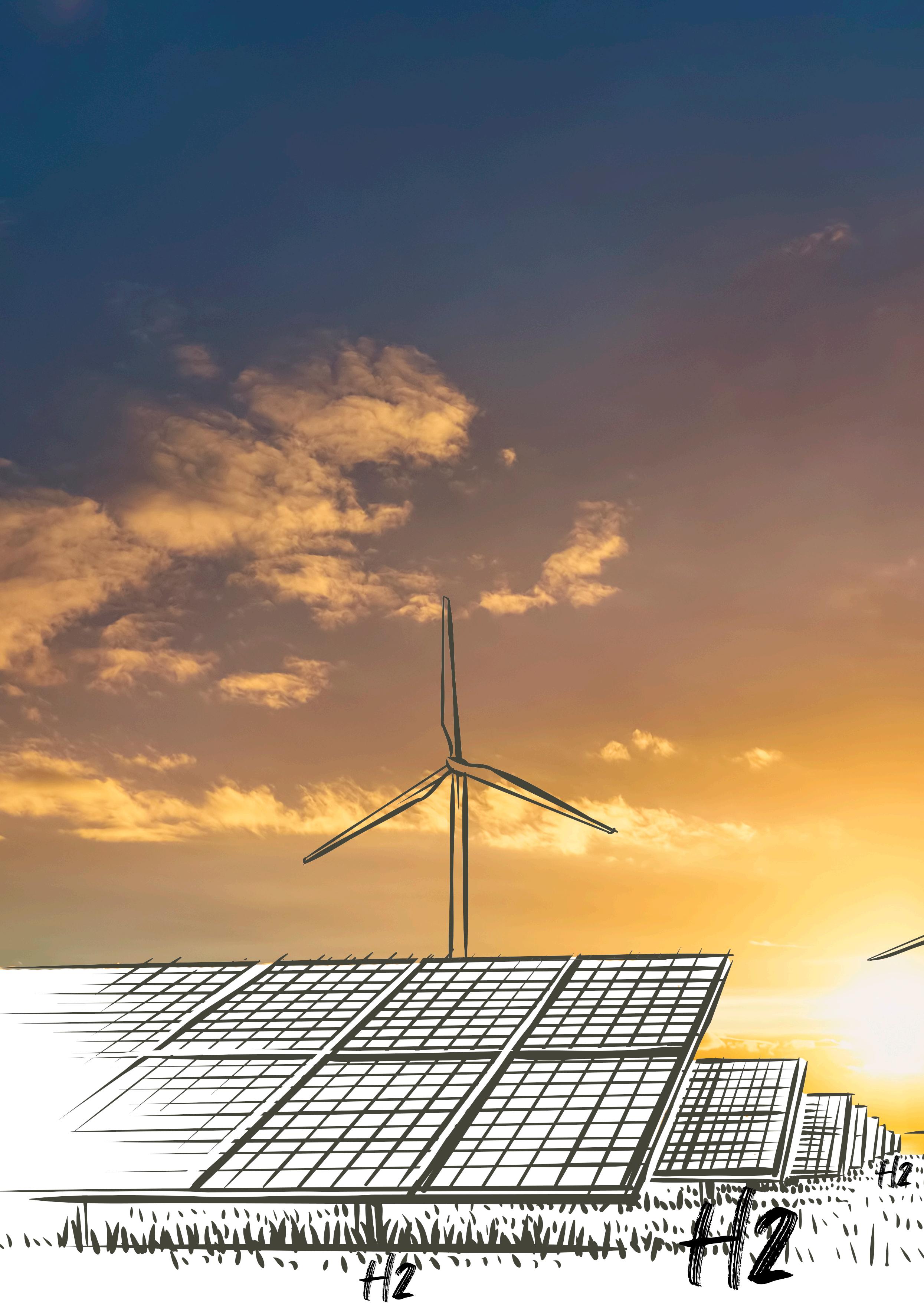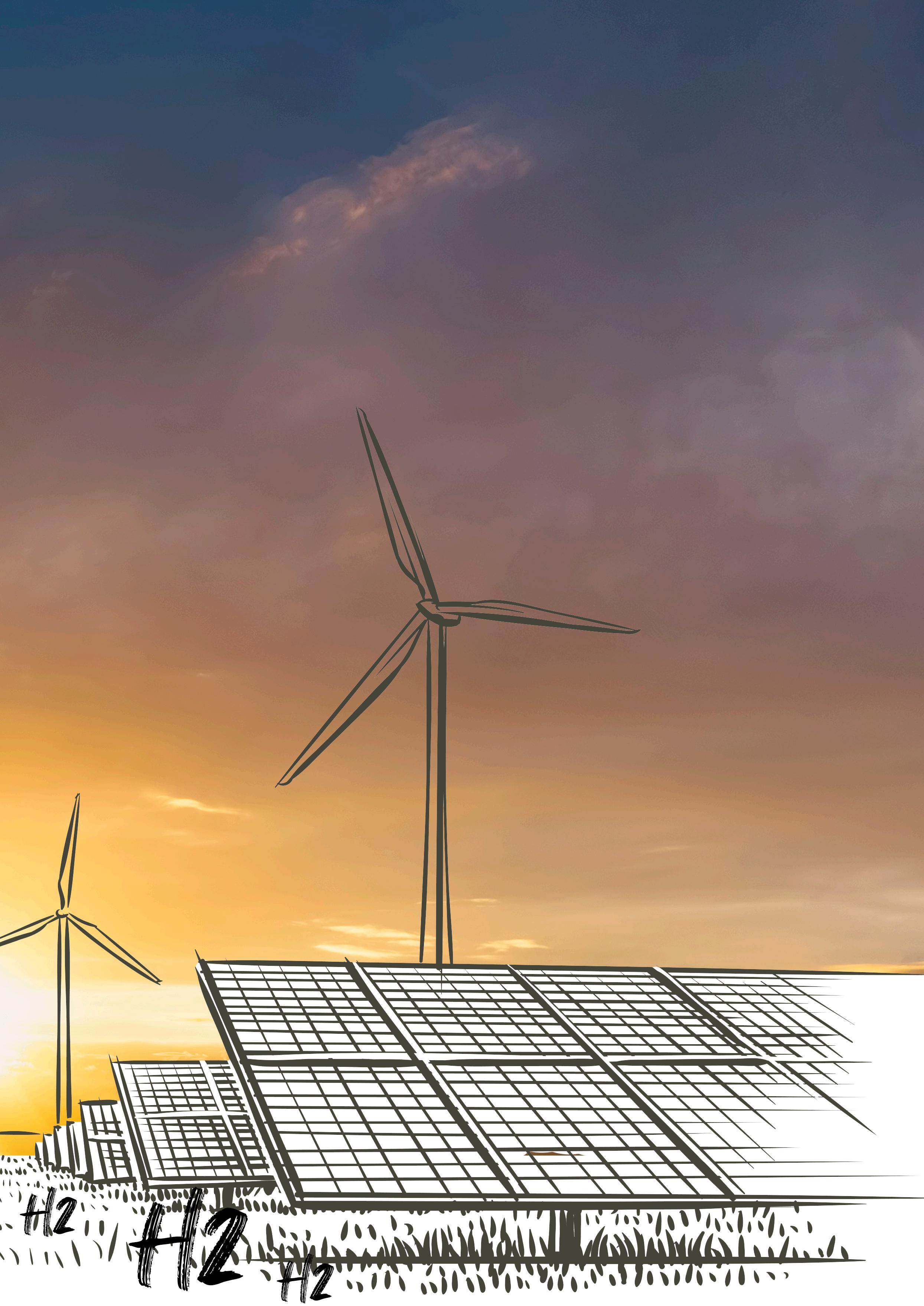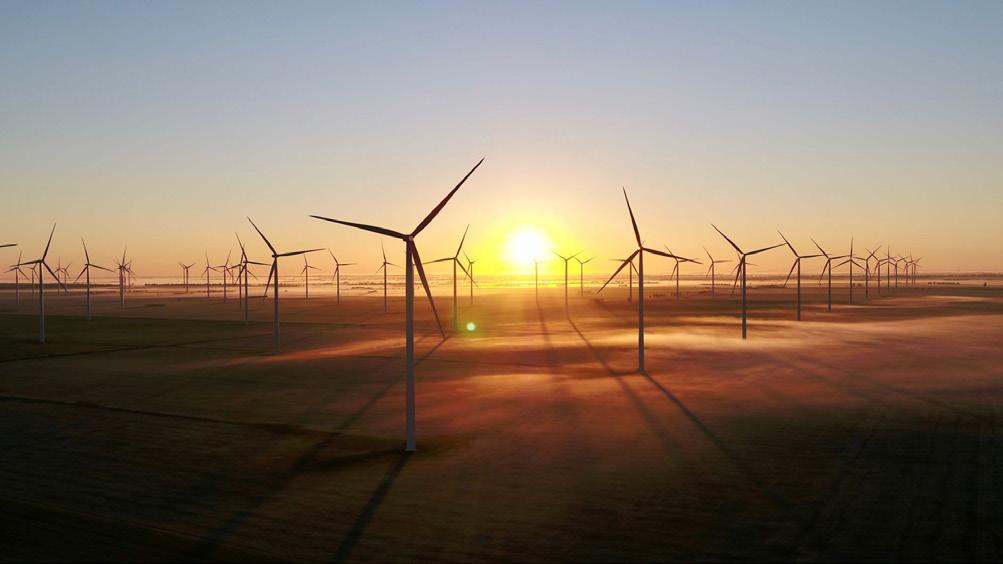
6 minute read
A new dawn for energy
Green hydrogen produced by electrolysis, a process discovered in England in 1800, can help complete the reset of the world’s energy and industrial systems by 2050.
On the path to reaching net zero by 2050, hydrogen can play a major role, complementing that of renewable electricity. It will be a solution in decarbonising several of the ‘hard to abate’ challenges in energy and industrial systems. Driven by robust standards, the roll-out of new hydrogen production capacity needs to be as close to zero carbon as possible. And to create switching incentives for end users, it must be as low cost as possible. Green hydrogen, produced by electrolysis of water using renewable electricity, can deliver on both carbon and cost. The roll-out must be kick-started now. Reaching scale early will deliver rewards in carbon reduction and economic growth.
Net zero changed everything
Cheap renewable electricity has provided the means to deliver deep decarbonisation of the world’s energy systems. And the success in driving renewables down the cost curve also gave people the belief to do more. In 2019, the UK became the first major economy to set a target of net zero greenhouse gas emissions into law, and much of the world is following. Electricity alone will not get the world to net zero. Other technologies are needed to decarbonise industry, heavy transport, and aspects of heating, and to enable the further deployment of wind and solar. Hydrogen, already a major industrial commodity and currently largely produced from fossil fuels, can play a large role.
Today, production of hydrogen is responsible for circa 830 million tpy of CO2, equivalent to approximately 2% of global carbon emissions. Current usage can be decarbonised most effectively by switching production to green hydrogen. And the hydrogen economy can be grown to provide a solution for several other hard to abate challenges. For example, heavy transport currently dependent on fossil fuels is likely to be an early switcher to hydrogen. In addition to environmental, social, and governance reasons, end users see breaking their dependency on volatile fossil fuel prices and on rising carbon prices as the principal reasons to switch early.
A standard path to 2050 is needed
In a world counting externalities, not all hydrogen molecules are equal. A wide range of hydrogen production paths are possible, with a wide range of carbon footprints and a rainbow of labels to describe them. These include: steam methane reformation (SMR), a process producing hydrogen with a high carbon footprint (labelled grey hydrogen); SMR with carbon capture and storage (CCS), a process which can produce hydrogen with a lower carbon footprint than SMR (labelled blue hydrogen); electrolysis of water using renewable electricity, either generated onsite or sourced through a grid power purchase agreement
John Prendergast, Senior Commercial Manager at RES, UK
and Ireland, discusses the role that hydrogen can play in reaching a net zero world, and why the roll-out must be kick-started now.

(labelled green hydrogen); electrolysis of water using nuclear energy (labelled pink hydrogen). Both green and pink can also be labelled zero carbon. RES expects end users to predominantly demand zero carbon hydrogen. To supply this, the company expects green hydrogen to play the dominant role as its electricity cost, the key driver of the levelised cost of hydrogen, is a fraction of the cost of nuclear energy.
In supporting the roll-out of technology, governments need to know their investments are actually on the path to net zero, and end users need to be sure their supply chains are what they claim to be. Therefore, a robust system of standards is needed. In addition to simple standards that may be used to determine eligibility for government support mechanisms, RES expects that end users will require a sophisticated standards/certification system giving assurance of the lowest carbon footprint, and of the production path. It is imperative that standards are underpinned by detailed work to accurately assess the total emissions of different production paths as major uncertainties still exist in these calculations.

Figure 1. Building confidence in forecasts of further green hydrogen roll-out, and hence forecast demand for renewable electricity, will have the added benefit of creating a pull-through for new wind and solar projects, all helping reach net zero. Image courtesy of Lighthouse.
Figure 2. Renewable-based electrification using wind and solar is the fastest way to decarbonise. Image courtesy of Keith Arkins.
Figure 3. RES and Octopus Energy have entered a partnership to invest £3 billion in building green hydrogen plants across the UK by 2030.


Accelerate now and reap the benefits
The EU has set a target of 40 GW of green hydrogen projects by 2030 and the UK has set a target of 5 GW of low-carbon hydrogen projects by 2030. Such long-term targets are important, but near-term work by governments to help early projects reach investment decisions and enter construction is even more so. Achieving scale will set green hydrogen production technology down the path of cost reduction already seen for other modular renewable technologies. In addition, building confidence in forecasts of further green hydrogen roll-out, and hence forecast demand for renewable electricity, will have the added benefit of creating a pull-through for new wind and solar projects, all helping reach net zero.
Countries that create the conditions for early roll-out of green hydrogen projects will reap far more than the benefits of decarbonisation. These projects will also be part of a green-led economic recovery, creating skilled jobs distributed nationally in project development, technology manufacturing, construction, and operations. Many of these jobs will be in industrial heartlands near to end users of hydrogen. In addition, green hydrogen innovation will create opportunities for global export as deployment becomes more widespread.
Several countries see this opportunity clearly. Germany is taking a very strong lead in developing a broad green hydrogen economy. It has announced a €9 billion national hydrogen strategy, principally focused on domestic growth and with €2 billion included to support international projects. Sweden has an interesting focus on green steel, with several projects in trials or development which will use green hydrogen in the steel production process. The UK has announced plans to support low-carbon hydrogen which includes blue and green hydrogen projects. RES’ view is that this work helps the UK move towards a net zero pathway, but to actually get onto a net zero pathway, the long-term UK focus will need to be green hydrogen.
The company believes in a world where everyone has access to affordable zero carbon energy. Green hydrogen is necessary to reach that world and the company wants to accelerate its deployment. RES is very excited to be working on a new partnership with Octopus Energy which aims to invest £3 billion in green hydrogen projects by 2030.
Coming full circle
So, it turns out that electrolysis, a technology created in the Industrial Revolution, can be one of the final pieces in the solution to climate change, a problem created in the Industrial Revolution. That tale has a nice symmetry. But now developers, investors, government, technology suppliers, and end users must collaborate to take it from the storybook and make it real. Net zero needs green hydrogen at scale, fast.

